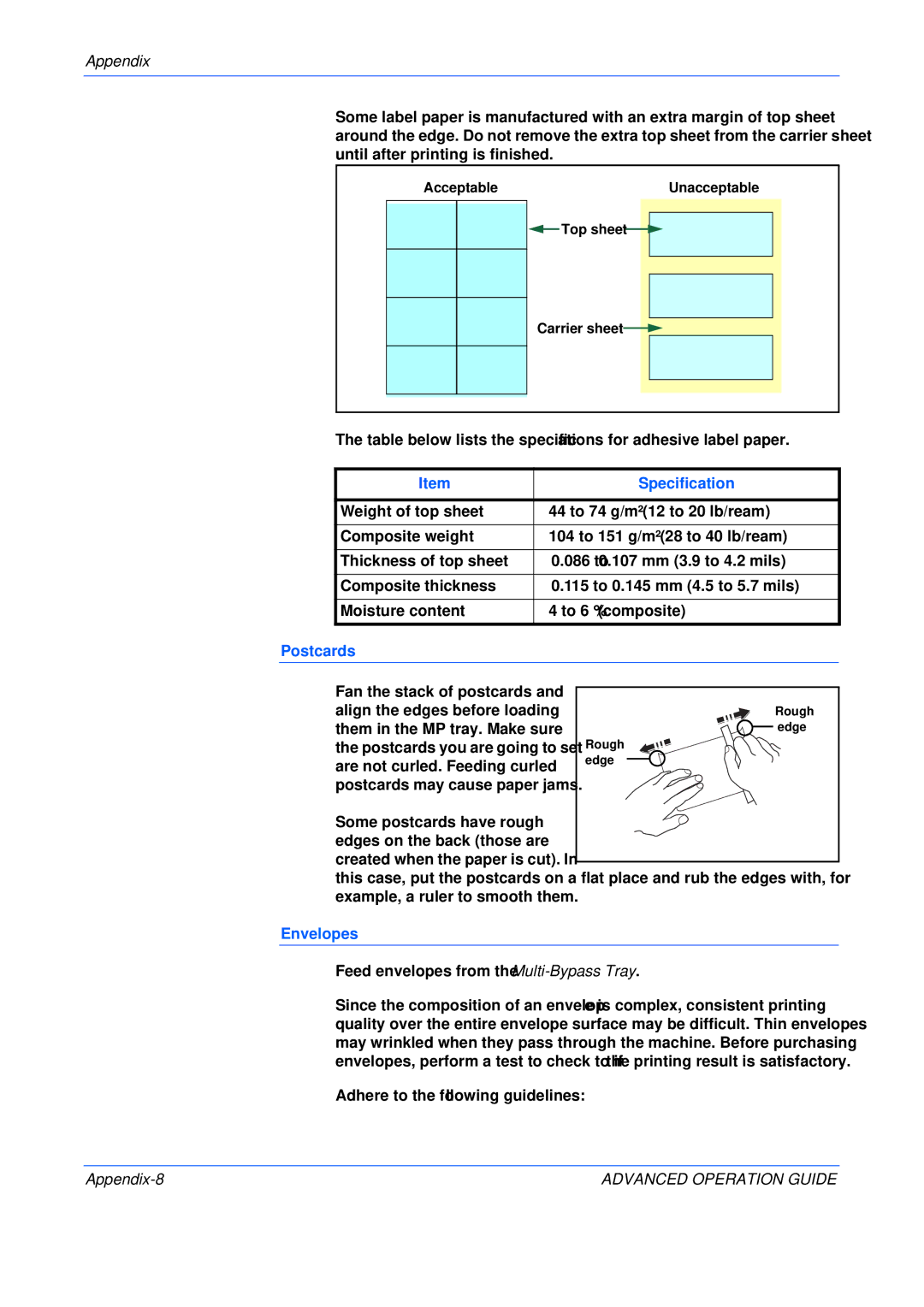
Appendix
Some label paper is manufactured with an extra margin of top sheet around the edge. Do not remove the extra top sheet from the carrier sheet until after printing is finished.
Acceptable | Unacceptable |
![]() Top sheet
Top sheet ![]()
![]()
Carrier sheet ![]()
![]()
The table below lists the specifications for adhesive label paper.
| Item | Specification |
|
|
|
| Weight of top sheet | 44 to 74 g/m² (12 to 20 lb/ream) |
|
|
|
| Composite weight | 104 to 151 g/m² (28 to 40 lb/ream) |
|
|
|
| Thickness of top sheet | 0.086 to 0.107 mm (3.9 to 4.2 mils) |
|
|
|
| Composite thickness | 0.115 to 0.145 mm (4.5 to 5.7 mils) |
|
|
|
| Moisture content | 4 to 6 % (composite) |
Postcards |
| |
Fan the stack of postcards and |
|
align the edges before loading | Rough |
them in the MP tray. Make sure | edge |
the postcards you are going to set | Rough |
are not curled. Feeding curled | edge |
postcards may cause paper jams. |
|
Some postcards have rough |
|
edges on the back (those are |
|
created when the paper is cut). In |
|
this case, put the postcards on a flat place and rub the edges with, for example, a ruler to smooth them.
Envelopes
Feed envelopes from the
Since the composition of an envelope is complex, consistent printing quality over the entire envelope surface may be difficult. Thin envelopes may wrinkled when they pass through the machine. Before purchasing envelopes, perform a test to check to if the printing result is satisfactory.
Adhere to the following guidelines:
ADVANCED OPERATION GUIDE |
